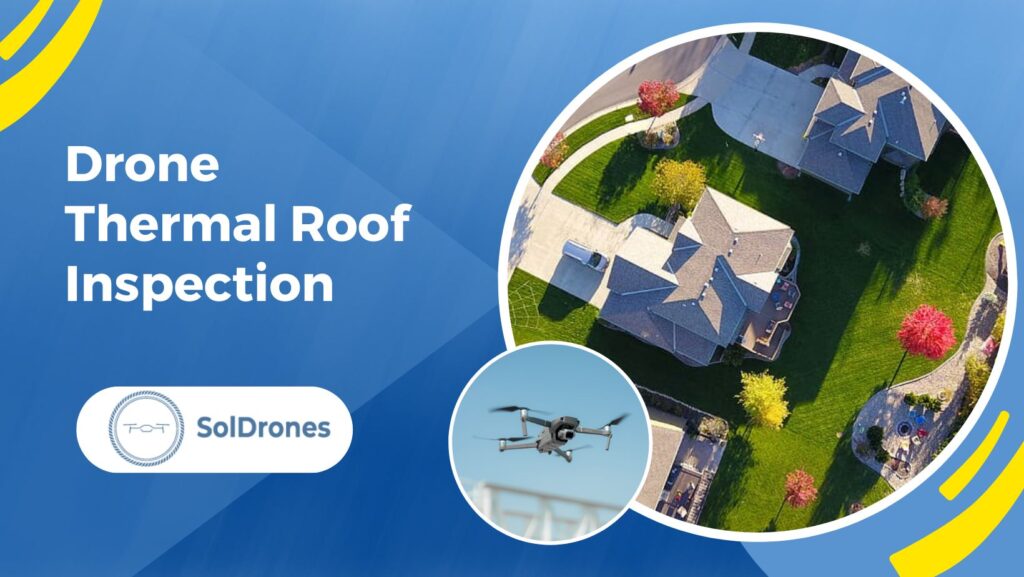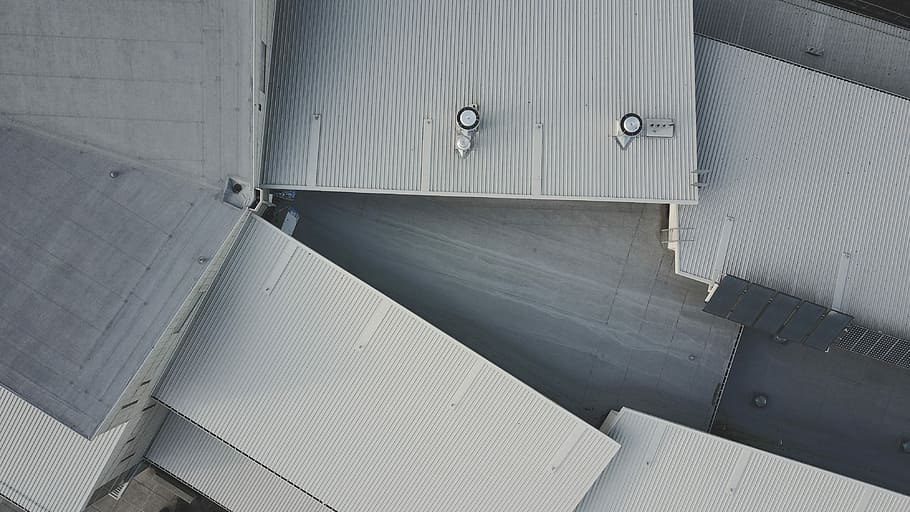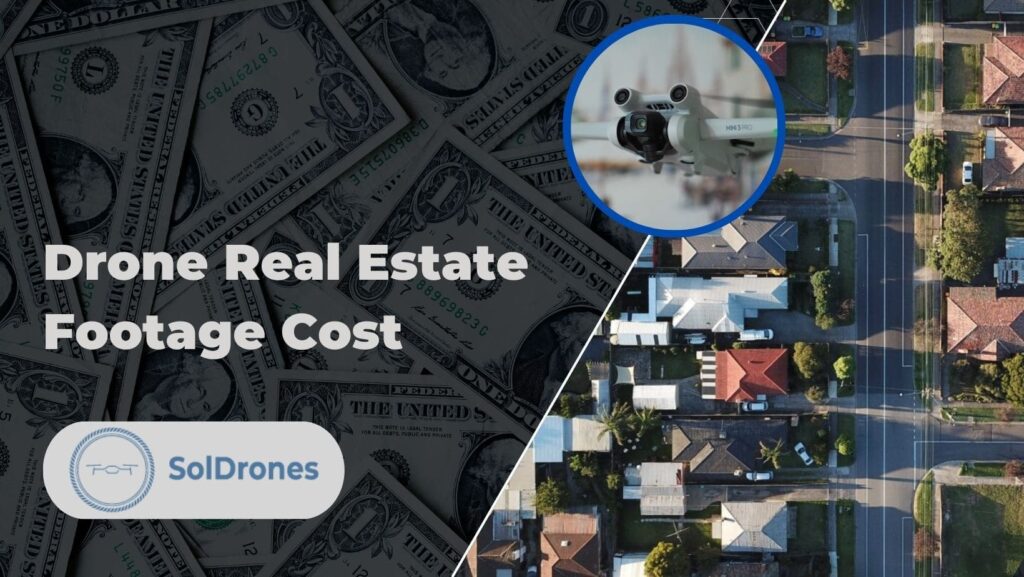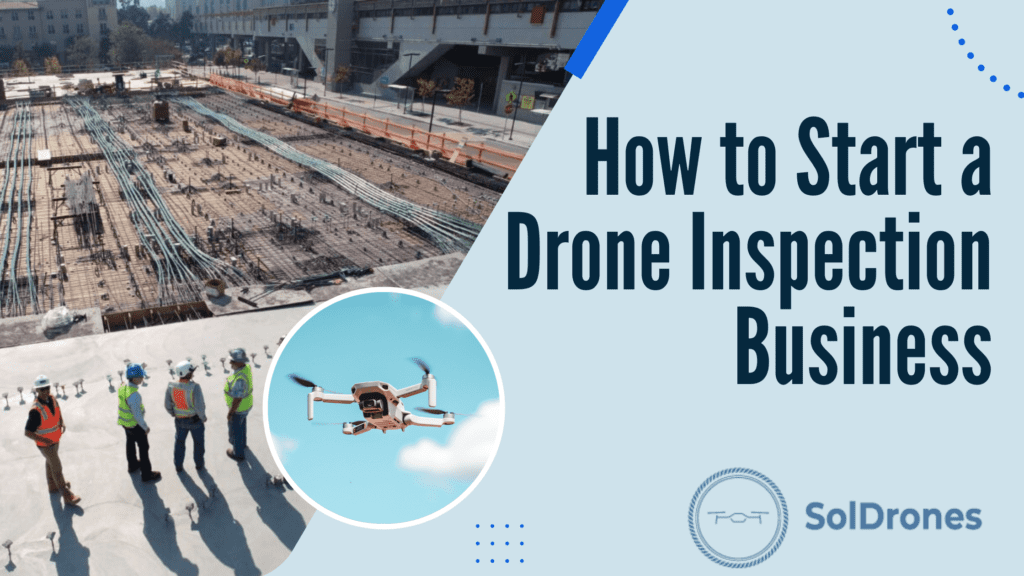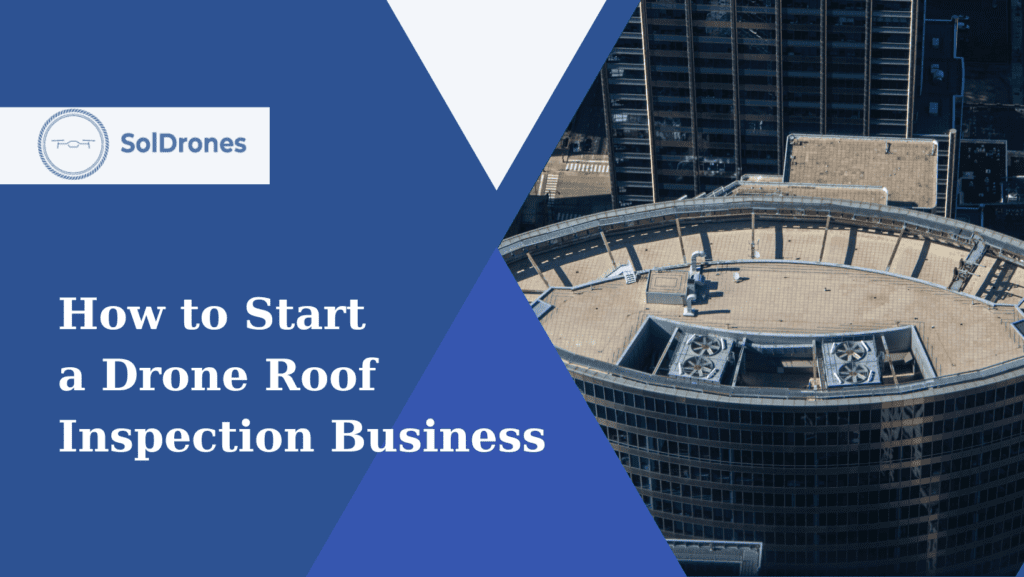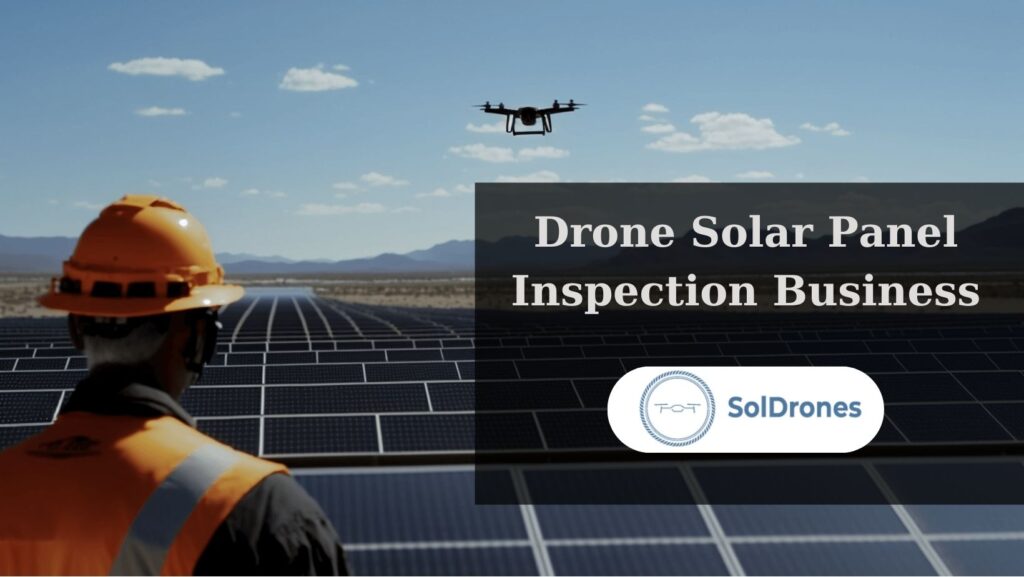Ever thought of supercharging your roofing business with a bird’s-eye view that even birds can’t see? Dive headfirst into drone thermal roof inspections, the future of roofing diagnostics that’s already here. By merging the prowess of drones with thermal imaging, you’re not just looking at roofs—you’re seeing right through them.
Now, let’s navigate this transformative frontier together. This article will unveil how infrared drones can elevate your services, giving you insights into their functionality, cost, and the unmatched benefits they pack for your business.
Article Highlights:
- Some major advantages of thermal drones for roof inspections include speed, accuracy, and preventative maintenance
- Some pro tips for thermal roof inspections include flying at the right time, flying at the correct altitude and speed, and capturing multiple angles
- Using drones for roof inspections can prevent damage to roofs and reduce risks for roof inspectors
Understanding Infrared Drone Technology
Infrared drone technology is a blend of sophisticated drone equipment and thermal imaging. These drones are equipped with infrared cameras that detect and measure the thermal energy emitted by objects.
The infrared spectrum, invisible to the human eye, comes alive on these sensors, mapping out temperature differences with color variations. Thermal imaging plays a pivotal role in roof inspections by revealing areas of heat loss or gain, potential leaks, or insulation issues. Infrared cameras work by capturing different levels of infrared light emitted by objects, interpreting these wavelengths into temperature data. They create a visual representation called a thermogram, which presents a unique heat signature for each area of the roof, enabling you to pinpoint issues swiftly and accurately.
Benefits of Using Drones with Infrared Cameras for Roof Inspections
Drones equipped with infrared cameras are revolutionizing roof inspections. Let’s dive into the key benefits they bring, from efficiency to unparalleled safety
Advantages over Traditional Roof Inspection Methods
- Speed: Drone inspections can be conducted much faster than manual inspections, saving precious time.
- Accuracy: Infrared imaging allows for more precise detection of faults that may be invisible to the naked eye.
- Preventive Maintenance: Early detection of issues can lead to timely repairs, extending the lifespan of the roof.
Efficiency and Safety Benefits of Drone Thermal Imaging
- Safety: Drones eliminate the need for inspectors to physically climb onto roofs, reducing the risk of accidents.
- Accessibility: Drones can access hard-to-reach areas, ensuring comprehensive inspection.
- Real-Time Analysis: Live feed from drones allows for immediate analysis and decision-making.
Detailed Data Collection for Comprehensive Roof Assessment
- Comprehensive Data: Drones capture high-resolution images and thermal data, allowing for a detailed analysis of the roof condition.
- GPS Tagging: Each image is GPS-tagged, providing exact location details of potential issues.
- Record Keeping: Digital records of inspections make future inspections and monitoring of roof condition more efficient in using infrared drone camera.
Infrared drone inspections not only make the process faster and safer, but they also provide a level of detail previously unattainable with traditional methods. As this drone technology becomes integral for roofing businesses, the next step is selecting the right equipment. Let’s explore key considerations when choosing an infrared drone for your needs
Key Considerations in Choosing the Best Drones With Infrared Cameras
Flight time for comprehensive coverage
Long flight times are vital for ensuring comprehensive roof inspections. The longer your drone can stay airborne, the more area it can cover, providing a more complete inspection.
Image quality and importance of high-resolution infrared cameras
High-quality images are essential for accurate inspections. Drones with high-resolution infrared cameras provide detailed thermal images, allowing for precise diagnosis of potential roofing issues.
Stability for accurate imaging, even in windy conditions
The ability of an infrared camera for drone to remain stable in various weather conditions is crucial. Even in windy conditions, a stable drone can capture accurate and clear thermal images.
Ease of use and user-friendly controls
Regardless of your experience level, user-friendly controls can simplify the operation process. The more intuitive the drone controls, the more efficient your inspections can be.
After-sales service, including warranties and repair services
Good after-sales services like warranties and repair services are important to consider aside from the infrared drone price. They ensure that you have the necessary support in case of technical difficulties or malfunctions.
Essential Features of Infrared Drones and Infrared Cameras for Drones for Roof Inspections
When diving into the realm of infrared drones for roof inspections, it’s crucial to understand the key features that can make or break your inspection process. From the foundational thermal imaging capabilities to advanced functionalities and pricing considerations, each factor plays a vital role in your inspection’s success. Let’s break down these essential features to help you make an informed decision.
Feature | Description |
Thermal imaging capabilities | This is the primary feature that enables an infrared drone to detect temperature variations on the roof surface, highlighting potential issues such as heat leaks or moisture intrusion. Drones equipped with high-resolution thermal cameras can provide detailed thermal images, making it easier to identify and assess potential problems. |
Special functionalities | Some infrared drones come with special functionalities such as radiometric thermal imaging that allows for the detection of exact temperature values, or MSX technology that overlays visible light details onto the thermal image for better clarity and context. These functionalities can significantly aid in detecting subtle heat variations and potential roof damage. |
Pricing considerations | The infrared drone price can vary greatly depending on its features, brand, and the type of camera it uses. It’s essential to understand that while the upfront cost might be high, the return on investment can be substantial considering the potential savings from early detection and repair of roof issues. |
Getting Certified and Trained for Drone Thermal Roof Inspections
Importance of Obtaining the Right Certification (such as the Part 107 Certification from the FAA in the United States)
Drone operation, particularly for commercial purposes, often involves navigating complex airspace, understanding weather patterns, and possessing a deep knowledge of drone equipment. In the United States, the Federal Aviation Administration (FAA) requires drone operators to obtain Part 107 certification. This certification provides validation that the operator has met all regulatory and safety requirements for drone operation.
This certification isn’t just a legal requirement; it serves a deeper purpose. The preparation for this certificate helps drone pilots to understand the nuances of drone operations, safety guidelines, and legal limitations. It demonstrates to clients that the operator has a professional understanding of drone flight, which builds trust and credibility in the operator’s abilities.
Understanding Drone Roof Inspection Software
Drone roof inspection software plays a vital role in conducting thermal inspections. It collects, analyzes, and processes thermal data to detect anomalies indicative of damage, moisture intrusion, insulation gaps, or other roofing issues. However, the data collected by the drone is only as good as the operator’s understanding of the software.
There are a multitude of software options available in the market, each with their own strengths and weaknesses. Some software offers advanced data analysis features, while others focus on user-friendly interfaces and ease of use. Some common software used in the industry include DroneDeploy, Pix4D, and FLIR Tools.
Choosing the right software and understanding its functionalities is a crucial part of the process. The drone pilot should be comfortable with the chosen software, know how to process the collected thermal data and interpret the results accurately.
Importance of Adequate Training and Where to Obtain It
Training is a fundamental part of becoming a proficient drone pilot, especially for thermal roof inspections. It equips pilots with the necessary skills to safely operate drones, capture high-quality data, and understand the thermal imaging results. Training is not just about knowing how to fly a drone, but also about understanding thermal imaging technology, its limitations, and how to interpret the images it produces.
A variety of resources are available for training, from online courses to in-person workshops. Some online platforms that offer relevant courses include Udemy, Coursera, and Drone U. Industry-specific training is also available from organizations like the Infrared Training Center (ITC), which offers courses on thermal imaging and drone operations.
Lastly, the FAA also offers resources and training modules to help drone pilots prepare for the Part 107 certification. This includes guides, sample tests, and other study materials that provide a comprehensive understanding of drone operation in different weather conditions, environments, and situations.
By obtaining the appropriate certification, understanding the software, and getting adequate training, drone operators can enhance their competence and reliability in conducting drone thermal roof inspections.
Conducting a Drone Thermal Roof Inspection
Planning and Preparation Tips
Before the actual inspection, thorough planning and preparation are crucial. Firstly, operators should ensure the drone and all its equipment are in excellent condition. The drone’s battery life, camera settings, and software should be checked. Moreover, the inspection site should be examined for potential hazards, such as power lines, trees, or tall buildings. It’s also essential to understand the layout of the roof and identify the key areas to inspect, planning the flight path accordingly.
Best Practices for Drone Roof Inspection
- Fly at the Right Time: The best time for a thermal inspection is often at dusk or dawn when the roof has cooled or warmed up from the sun.
- Use Correct Altitude and Speed: Maintaining an optimal altitude and speed is crucial for capturing clear, stable thermal images.
- Capture Multiple Angles: To ensure a comprehensive inspection, capture images from multiple angles and viewpoints.
- Use Appropriate Camera Settings: Depending on the software used, make sure to utilize the optimal settings for thermal imaging.
Privacy Considerations During Residential Inspections
During residential inspections, privacy should be a major consideration. Pilots should avoid capturing images of adjacent properties or private spaces within the property being inspected. Informing the residents and their neighbors about the inspection beforehand can also alleviate potential privacy concerns.
Understanding Local Regulations for Flying Drones during Inspections
Local regulations may dictate specific rules for drone operations, including height restrictions, no-fly zones, and permission requirements. Operators should familiarize themselves with these regulations and adhere to them strictly. Failure to comply can result in penalties and can harm the operator’s credibility.
Expected Duration of a Drone Thermal Roof Inspection
The duration of a drone thermal roof inspection can vary greatly based on a few factors. These can include:
Size of the Property
Larger properties generally take longer to inspect.
Complexity of the Roof: Roofs with complex designs or multiple levels require more time for a thorough inspection.
Drone Battery Life
The battery life of the drone can limit the duration of the inspection. Extra batteries may be necessary for larger properties.
Data Analysis Time
Depending on the software used, the processing and analysis of the captured data can add significant time to the inspection process.
Typically, the actual flight and image capture may take anywhere between 20 minutes to a couple of hours, while data analysis can add a few more hours to the process. Therefore, clients should be prepared for the process to potentially take a full day, especially for larger or more complex properties.
Interpreting Data from Infrared Drone Roof Inspections
Diving into a drone roof inspection is not just about capturing images; it’s about harnessing a variety of data types to get a complete picture of a roof’s condition. From thermal imaging that reveals hidden issues to traditional visual snapshots and even 3D representations, there’s a wealth of information at your fingertips.
Types of Data That Can Be Captured During a Drone Roof Inspection
During a drone roof inspection, a multitude of data can be collected to aid in the analysis of a roof’s condition. The primary types of data include:
- Thermal Images: These provide information about temperature variations on the roof, helping identify areas with insulation issues or moisture intrusion.
- Visual Images: These are regular, high-resolution images that can capture visible signs of wear and tear, physical damage, or potential obstructions.
- 3D Models: Using photogrammetry software, 3D models of the roof can be generated, which provide a detailed overview of the roof’s structure, pitch, and potential problem areas.
How to Interpret This Data, Including Detection of Roof Damage or Leaks
Interpreting the data gathered during a drone roof inspection requires an understanding of infrared technology and roofing structures.
For thermal images, areas with potential moisture damage often appear cooler (depicted as darker areas) due to the cooling effect of evaporation. Conversely, missing or damaged insulation can cause heat to escape, making these areas appear warmer (depicted as lighter or brighter areas).
Visual images should be examined for signs of physical damage such as cracked or missing shingles, sagging areas, or debris accumulation.
3D models can help in understanding the structural integrity of the roof. They provide a holistic view of the roof’s condition, making it easier to identify and locate potential problem areas.
Starting a Drone Thermal Roof Inspection Business
Taking flight into the realm of drone thermal roof inspections as a business venture can be exhilarating, but like any startup, it requires a systematic approach. The path from ideation to launching your operations involves various steps, from understanding the market landscape to ensuring you’re legally protected. Here’s a roadmap to guide you through the key steps to kickstart your journey in this emerging field.
Market Research
Begin by conducting thorough market research to gauge the demand for drone thermal roof inspection services in your local area. Identify who your potential clients could be, such as homeowners, real estate firms, or insurance companies. Similarly, understand who your competitors are, what services they offer, and their pricing structures. Market research will help you find your unique value proposition and set competitive prices for your services.
Obtain Necessary Certification and Training
Before starting your operations, ensure that you have obtained the necessary certification and training. In the United States, drone pilots are required to hold the Part 107 certification from the FAA. Apart from legal compliance, this training and certification equip you with the required knowledge and skills to operate a drone effectively and safely.
Purchase Equipment
Once you’re certified, you need to invest in the right equipment. Your drone should be reliable and equipped with thermal imaging capabilities to ensure high-quality inspections. Additionally, you will need to purchase software for data analysis. The quality of your equipment can significantly impact the accuracy of your inspections, so consider this an important investment.
Form a Legal Entity
After acquiring the necessary equipment, you should establish a legal business entity. This process may involve registering your business name, obtaining an Employer Identification Number (EIN), and securing necessary permits and licenses. Consulting with a business advisor or attorney can help you understand the legal implications and requirements, ensuring you establish your business correctly and legally.
Insure Your Business
Drone operations involve several risks, such as potential damage to property or the drone itself, hence the importance of obtaining suitable insurance. Insurance can protect your business against claims and lawsuits, providing you with financial protection. Depending on your location and the nature of your operations, you may need to consider various types of insurance, such as liability insurance, hull insurance, or even business interruption insurance.
Market Your Services
Finally, to attract clients, you need to effectively market your services. You could build a professional website to showcase your services, client testimonials, and portfolio of past work. Business cards can be useful for networking events, while social media marketing can help you reach a wider audience. It’s crucial to tailor your marketing strategy to your target audience, focusing on the benefits and value of your drone thermal roof inspection services.
Common Challenges in Drone Roof Inspections and How to Overcome Them
Venturing into drone roof inspections isn’t without its hurdles. While the benefits are clear, operators often face challenges that can range from the unpredictability of weather to navigating regulatory landscapes. Understanding these challenges ahead of time and being prepared with solutions will equip you for a smoother ride in the drone inspection industry. Here’s a look at some of the common challenges and best practices to overcome them.
- Weather Conditions: Adverse weather can hinder drone operations. Always check the weather forecast before scheduling inspections and have a backup plan in place.
- Technical Issues: Drones, like any other technology, can experience technical difficulties. Regular maintenance and equipment checks can help prevent these issues.
- Privacy Concerns: As previously mentioned, drone operations can raise privacy issues. Always inform residents about the inspection, and avoid capturing images of private areas.
- Regulatory Compliance: Ensure that you always comply with local and federal drone regulations to avoid penalties.
Potential Job Opportunities
A drone thermal roof inspection business can cater to various clients, creating diverse job opportunities. Potential clients include:
- Homeowners: Regular roof inspections can help homeowners maintain their roof’s condition and address issues early.
- Real Estate Companies: Real estate firms often need roof inspections during property transactions to understand the property’s condition.
- Insurance Companies: Insurance providers may require roof inspections after a claim has been filed or for routine assessment.
- Commercial Properties: Commercial buildings, particularly those with flat roofs, can benefit from regular drone thermal inspections to maintain their buildings effectively.
- Construction Companies: Roof inspections can ensure that newly built properties meet all safety and quality standards.
By identifying and targeting the right clients, your drone thermal roof inspection business can find various job opportunities in the market.
Final Thoughts
Drone thermal roof inspections provide an efficient and effective method of assessing roof conditions and identifying potential issues. As we’ve explored, starting such a business requires obtaining the right certification and training, understanding how to conduct inspections, and knowing how to interpret the data gathered. Starting a business in this field involves thorough market research, the procurement of suitable equipment, forming a legal entity, insuring your business, and effective marketing. While it does pose certain challenges, the burgeoning demand and diverse job opportunities make it a promising venture.
FAQs
What certification do I need to conduct drone thermal roof inspections?
In the United States, the Federal Aviation Administration (FAA) requires commercial drone pilots to hold a Part 107 certification. This certification ensures that you have the knowledge to safely and legally operate a drone.
How can I start a drone thermal roof inspection business?
To start a drone thermal roof inspection business, you need to conduct market research, obtain necessary certification and training, purchase the right equipment, form a legal entity, insure your business, and market your services. Remember that each step plays a crucial role in the success of your business.
What are the common challenges in drone roof inspections?
Some of the common challenges include adverse weather conditions, technical issues with the drone, maintaining privacy during residential inspections, and complying with local and federal drone regulations. These can be managed by planning thoroughly, maintaining equipment, informing residents about inspections, and staying updated on drone laws.
How is data from drone roof inspections interpreted?
Data from drone roof inspections can include thermal images, visual images, and 3D models. Thermal images are interpreted by looking at temperature variations on the roof surface, while visual images are used to spot physical damage. 3D models provide a comprehensive view of the roof’s condition. AI and Machine Learning can further assist in data interpretation.
What are the potential job opportunities in drone thermal roof inspection?
A drone thermal roof inspection business can cater to various clients, including homeowners, real estate companies, insurance companies, commercial property owners, and construction companies. Each of these clients may require drone roof inspections for different reasons, providing diverse job opportunities.

